Finding Napoleon at the Louvre was harder than I expected. After unsuccessfully searching their website, I wrote in advance for a list of Napoleon-related paintings: no response. I queried several agencies for a specialized guide: no luck. So, when we arrived, we headed straight for the Information Desk. Did I know about the Coronation painting by David? Yes, but are there others? No, I was assured, no other portraits or statues in the Louvre related to Napoleon. I switched to French to see if the answer changed. It did not. Meanwhile, my husband approached the manager. Oh, yes, she said, one other painting and she put a mark on the Sully wing of our museum map.
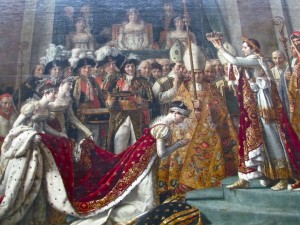 We headed to the Denon wing to view the coronation scene. The second largest painting in the Louvre, it’s both incredible art and a magnificent public relations piece. Napoleon had his mother prominently positioned in the painting, although she refused to attend, since as a republican and pessimist, she felt he was overstepping his bounds. Then he had the painter David obscure the fact that he had crowned himself by portraying instead the less notable event of him crowning Josephine as empress. If you look carefully, you can still see the revision on the canvas. We can only be grateful that, after divorcing Josephine, Napoleon didn’t have David paint his second wife’s face onto the neck of the first empress’s body! Still, it is a magnificent piece of art and history.
We headed to the Denon wing to view the coronation scene. The second largest painting in the Louvre, it’s both incredible art and a magnificent public relations piece. Napoleon had his mother prominently positioned in the painting, although she refused to attend, since as a republican and pessimist, she felt he was overstepping his bounds. Then he had the painter David obscure the fact that he had crowned himself by portraying instead the less notable event of him crowning Josephine as empress. If you look carefully, you can still see the revision on the canvas. We can only be grateful that, after divorcing Josephine, Napoleon didn’t have David paint his second wife’s face onto the neck of the first empress’s body! Still, it is a magnificent piece of art and history.
We headed to the Sully wing to find the location the Information manager had marked for us. The Louvre is huge and even in March crowded with tourist groups, although few Americans. Fifteen minutes later, at our destination, we entered a gallery with paintings from fifty years after Napoleon’s time. After a heated discussion, a museum guide flagged down a passing high-level Louvre official. The gracious curator directed us to the room just beyond the coronation painting. All the while apologizing that there really isn’t much else Napoleonic in the Louvre, he also marked on our map the site of a small First Empire furniture exhibit.
We rushed back to the Denon wing and found a bit of what I was expecting:
Yet, even after finding these masterpieces and a few pieces of First Empire furniture, I was surprised there was so little of France’s greatest hero at its greatest museum.

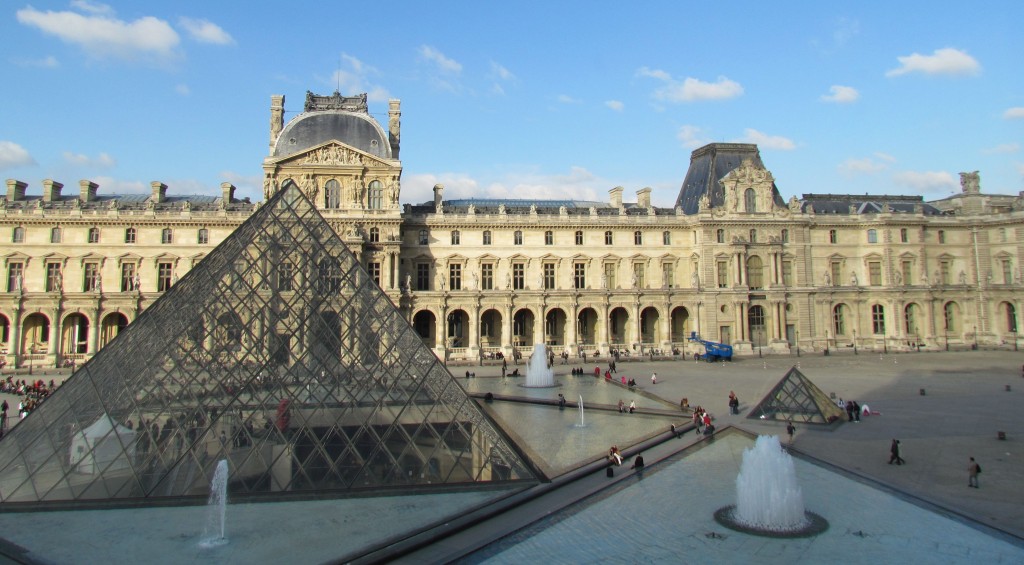
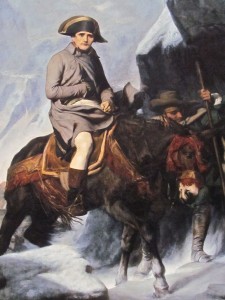
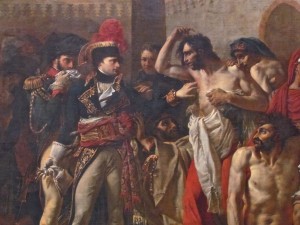
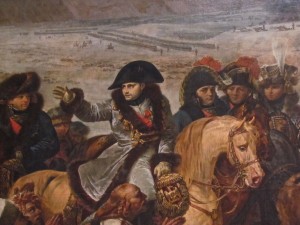
Good thing Bert approached the manager! I have to tell you i am really enjoying this blog and all the history associated with this project.
Cool! Glad you’re enjoying it. It gets more and more interesting to me every day.
Sadly, you missed the excellent romantic painting of a Napoleonic-era cavalry officer by Gericault which is also at the Louvre.
Hello, Walter, thanks for your comment. I do indeed have a photo of this magnificent painting and I’ll feature it on my next blog post.
Pingback: Finding Napoleon » Géricault’s Napoleonic Cavalry Officer
Do you know what percent of the art in the Louvre is art that Napoleon looted during his military campaigns?
After his fall from power what percent of the art that he looted was returned to its rightful owner?
David, I do not. Last time I went to the Louvre I made a few inquiries and no one wanted to talk about it!
Pingback: Jacques-Louis David’s Painting of the Coronation of Napoleon toured the United States in 1826 » Finding Napoleon
Pingback: I Went To Paris And All I Got Was A Bunch of Second-Hand Crack | Female-penned comedy from Brown University
Pingback: Finding Napoleon Bonaparte in Madrid – Part 2 - Finding Napoleon
Pingback: Finding Napoleon in London at Wellington's Aspley House Museum
Pingback: Géricault's Napoleonic Cavalry Officer - Margaret Rodenberg